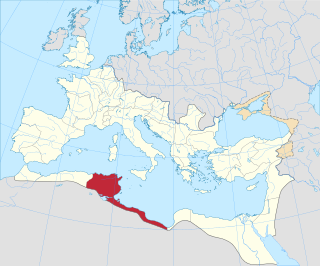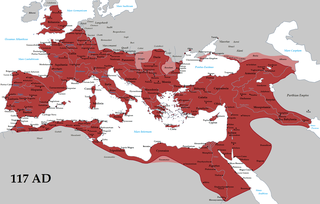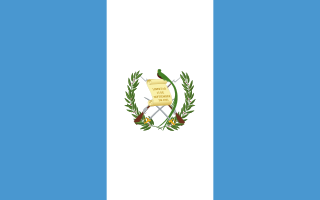
Chogha Zanbil is an ancient Elamite complex in Khuzestan province of Iran. It is one of the few existent ziggurats outside Mesopotamia. It lies approximately 30 km (19 mi) south-east of Susa and 80 km (50 mi) north of Ahvaz.

Haïdra is a municipality in western Tunisia, containing the ruins of Ammaedara, one of the oldest Roman cities in Africa. It was a diocese and is now a Roman Catholic titular see.
André Dupont-Sommer was a French semitologist. He specialized in the history of Judaism around the beginning of the Common Era, and especially the Dead Sea Scrolls. He was a graduate of the Sorbonne and he taught at various institutions in France including the Collége de France (1963-1971) where he held the chair of Hebrew and Aramaic.

Zama, also known as Xama, in what is now Tunisia is best known for its connection with what is called the Battle of Zama, in which, on 19 October 202 BC, Scipio Africanus defeated Hannibal, ending the Second Punic War with victory for the Roman Republic, and breaking the power of Ancient Carthage.
The Prix Stanislas Julien is a prize for a sinological work (usually) published in the previous year. It is named after the French sinologist, Stanislas Julien, and is awarded by the Académie des Inscriptions et Belles-Lettres. The prize was established in 1872 and first awarded in 1875.

Tiddis was a Roman city that depended on Cirta and a bishopric as Tiddi, which remains a Latin Catholic titular see.
Eugène Albertini was a 20th-century French teacher in Latin literature, a historian of ancient Rome, especially for North Africa and an epigrapher of Latin texts. He was a member of the Académie des inscriptions et belles-lettres (1938).
Auguste Audollent was a French historian, archaeologist and Latin epigrapher, specialist of ancient Rome, in particular the magical inscriptions. His main thesis was devoted to Roman Carthage.

Thibilis was a Roman and Byzantine era town in what was Numidia but is today northeast Algeria. The site has extensive Roman and Byzantine ruins.

Abbir Maius also known as Abbiritanus was a Roman and Byzantine-era civitas (city) in the Roman province of Africa proconsularis.

Semta was a Roman era Municipium also known as Augustum Semta in Africa Proconsularis that is tentatively identified with ruins at Henchir Zemba (Dzemda) Carthage, Tunisia near the Oued el Kebir 20 km (12 mi) southwest of Zaghouan at 36.269282, 9.887345.

Dzemda is a locality in Tunisia.

Thucca Terenbenthina, also known as Thugga, was an ancient Roman-Berber town in the province of African Proconsularis. In late antiquity, it was made a municipium of the province of Byzacena. Thucca Terenbenthina is identified with ruins located in the modern town of Dougga, Tunisia.

Henchir-Bel-Aït is a locality and archaeological site in Tunisia.
Furni also known as a Furnos Maius and Ain-Fourna was a Roman era civitas of the Roman province of Africa Proconsularis on the Oued Kibira tributary of the Meliane River.

Henchir-Aïn-Dourat, also known as Ad-Duwayrat or Henchir Durat, is a former Roman–Berber civitas and archaeological site in Tunisia. It is located at 36.767496n, 9.524142e, in the hills just north of Toukabeur and 15.3 km from Majāz al Bāb. It was an ancient Catholic diocese.
Henchir-Mâtria is an archaeological and prehistoric site in northern Tunisia. Henchir-Mâtria is at 36°31′23.4″N9°13′11.1″E, between Béja and Dougga and elevation of 407 metres. It is on the Oued el Beida River.
The Prix Giles is awarded biennially for a work relative to China, Japan or East Asian that was published in the previous two years by a French author. It is named after the British sinologist, Herbert Giles, and is awarded by the Académie des Inscriptions et Belles-Lettres. The prize was established in 1917 and was funded by Herbert Giles himself. The first award was given in 1919.
The Diocese of Thucca Terenbenthina is an ancient Titular See of the Roman Catholic Church. The diocese is also known as Tucca Terebentina or دڨة, .
Comptes Rendus (proceedings) may refer to several academic journals or conference proceedings















